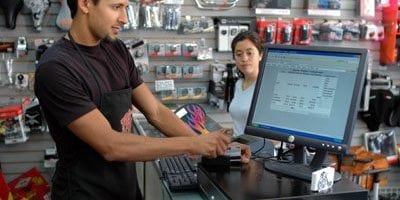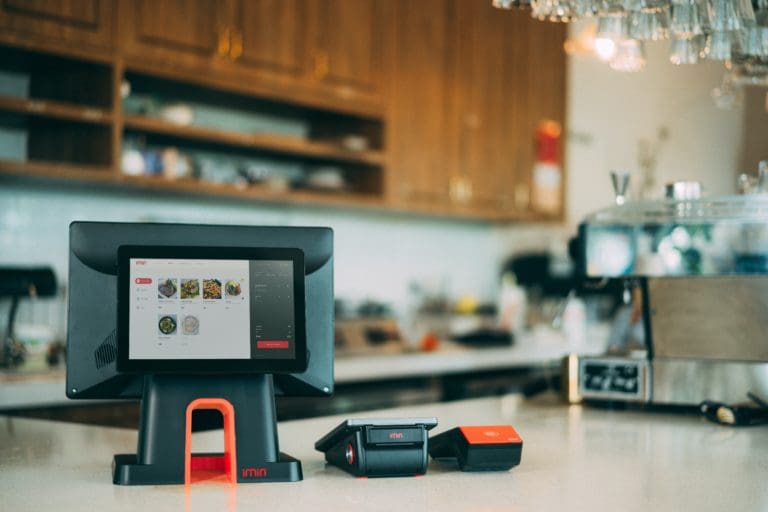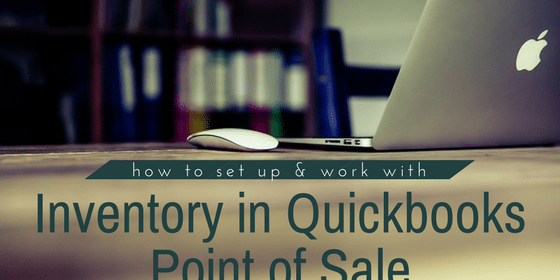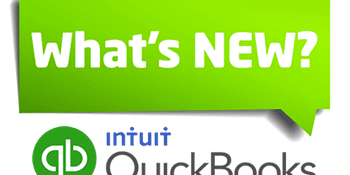Benefits Of A Point Of Sale System vs. A Cash Register

Pete Real
If you operate nearly any type of retail business, you obviously have to have a cash register of some sort. While collecting and safely storing money is certainly important, it’s actually the data collection that is the key function of a cash register today. Having money in the till is great, but unless you know the day’s sales you can’t even know how much money should be there—and that’s just one piece of critical data. For that reason the basic cash register years ago began evolving into much more: what is today known as a point of sale (POS) system. The power of POS systems permits you to integrate many different functions beyond just serving as a cash register. Inventory tracking and accounting are two significant ones.
Implementing some form of inventory control system requires assigning an identifier to your merchandise. While it is certainly possible to implement custom systems, the Universal Product Code (UPC) symbol helpfully placed on nearly every retail product makes this unnecessary. At the highest levels (such as retail giants like Walmart) these systems can even order automatically to prevent out-of-stock situations, but even without this much sophistication your POS system’s reporting can provide numerous reports to show you what sells well, what doesn’t, what sells in combination with other products, what sells at what time of the day, week, month, or year, and a myriad of other information sets. This functionality is built into virtually all off-the-shelf POS software. Typically you’ll need only to add a barcode scanner in order to fully exploit it.
The next step in integration is to incorporate another important cash register event into your POS system: credit and debit card acceptance. Granted, you can have the clunkiest antique of a cash register and still accept cards using a standalone terminal. However, this means additional steps every time you accept a card payment. More steps mean more cashier time, slower checkouts, and additional opportunity for error (such as an incorrect sale amount entered in the terminal).
It’s much more efficient to process credit card transactions directly through your POS system. In addition to saving time and reducing errors, it makes reconciling each day’s credit card batch much easier. There are a couple of ways to accomplish this. Some major POS system vendors like Intuit have their own merchant processing services, which makes integration a breeze. You can also determine what POS systems your current merchant processor supports, or conversely if you know what POS system you want, you can shop merchant processors to find those that support it.
In addition, you may choose to move beyond the integration of all functions that occur at the point of sale. Your business doubtless has some sort of back office operation that deals with accounting functions. Inventory and sales are major components of your company’s accounting. So what if you could take all the information generated by your POS system reporting and seamlessly transfer it into your accounting system?
If automating cashier functions is a time saver, automating accounting processes can be a game changer. Substantial amounts of data that would otherwise have to be manually input can be transferred in seconds. Aside from the time this saves, if you think errors can creep into credit processing at the cash register, just think of the errors that can be made in manual accounting data entry.
Once again, Intuit is a major provider of integrated POS and accounting software suites. However, other accounting systems have the ability to import data from a number of sources, so a little research will reveal POS systems compatible with whatever accounting software you’re currently using. Be sure to check customer reviews to see whether the data transfer process (and the system itself, for that matter) holds up to what the company advertises.
The days when just a cash register was all you needed for your retail business are behind us. You can accomplish so much more with far less effort thanks to the power of POS and accounting software. Integrating the two will pay substantial dividends for your business. We would love to hear about your experience with a specific point of sale system and if it worked well for you. If you are looking to make the move to a point of sale system and have questions on what to look for and or where to start (it can be a bit daunting!) feel free to give us a call at 866-949-7267 and we can help you navigate through the process.
- best point of sale systemcash register vs. point of salecompare point of sale systemslow cost point of sale systemmobile point of salepoint of sale bar code scanningpoint of sale inventory trackingpoint of sale merchant accountpoint of sale vs. a terminalPOS systemquickbooks multi storequickbooks point of sale basicquickbooks point of sale merchant servicessync payments with quickbooks
















